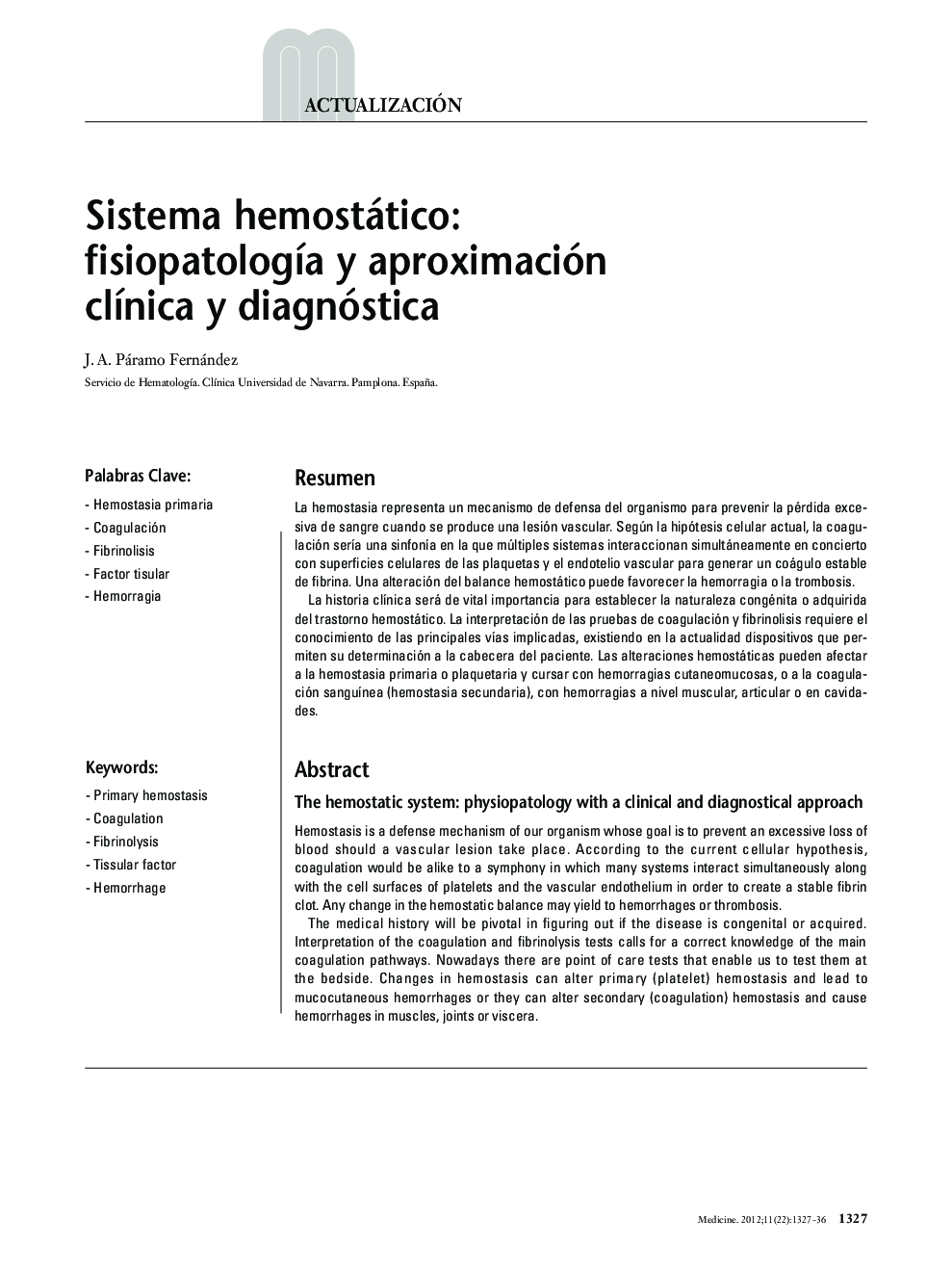| Article ID | Journal | Published Year | Pages | File Type |
|---|---|---|---|---|
| 3806037 | Medicine - Programa de Formación Médica Continuada Acreditado | 2012 | 10 Pages |
ResumenLa hemostasia representa un mecanismo de defensa del organismo para prevenir la pérdida excesiva de sangre cuando se produce una lesión vascular. Según la hipótesis celular actual, la coagulación sería una sinfonía en la que múltiples sistemas interaccionan simultáneamente en concierto con superficies celulares de las plaquetas y el endotelio vascular para generar un coágulo estable de fibrina. Una alteración del balance hemostático puede favorecer la hemorragia o la trombosis.La historia clínica será de vital importancia para establecer la naturaleza congénita o adquirida del trastorno hemostático. La interpretación de las pruebas de coagulación y fibrinolisis requiere el conocimiento de las principales vías implicadas, existiendo en la actualidad dispositivos que permiten su determinación a la cabecera del paciente. Las alteraciones hemostáticas pueden afectar a la hemostasia primaria o plaquetaria y cursar con hemorragias cutaneomucosas, o a la coagulación sanguínea (hemostasia secundaria), con hemorragias a nivel muscular, articular o en cavidades.
Hemostasis is a defense mechanism of our organism whose goal is to prevent an excessive loss of blood should a vascular lesion take place. According to the current cellular hypothesis, coagulation would be alike to a symphony in which many systems interact simultaneously along with the cell surfaces of platelets and the vascular endothelium in order to create a stable fibrin clot. Any change in the hemostatic balance may yield to hemorrhages or thrombosis.The medical history will be pivotal in figuring out if the disease is congenital or acquired. Interpretation of the coagulation and fibrinolysis tests calls for a correct knowledge of the main coagulation pathways. Nowadays there are point of care tests that enable us to test them at the bedside. Changes in hemostasis can alter primary (platelet) hemostasis and lead to mucocutaneous hemorrhages or they can alter secondary (coagulation) hemostasis and cause hemorrhages in muscles, joints or viscera.
